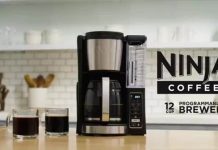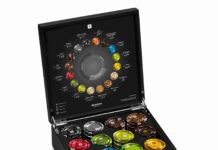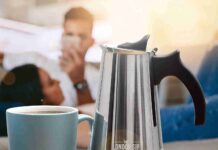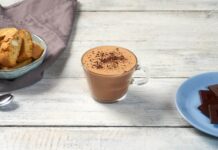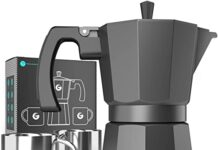Good day, coffee connoisseurs! Today, we embark on a caffeinated journey to uncover the answer to a burning question: What coffee maker reigns supreme in the realm of temperature? We are about to unveil the secrets behind brewing the hottest cup of joe as we venture into the world of coffee makers. So, brace yourselves for an exciting exploration that will leave you yearning for that perfect, piping hot morning brew.
Factors Affecting Coffee Temperature
When it comes to enjoying a hot cup of coffee, there are several factors that can affect its temperature. These factors include the type of coffee maker used, the water temperature, the brewing method, and the quality of the beans. By understanding how each of these factors contribute to the temperature of your coffee, you can make an informed decision on the best coffee maker for hot, steaming cups of java.
Drip Coffee Makers
How Drip Coffee Makers Work
Drip coffee makers are one of the most popular options for brewing coffee at home. They work by heating water and then pouring it over ground coffee beans. The hot water drips through a filter and into a carafe, resulting in a smooth and flavorful cup of coffee.
Temperature Control in Drip Coffee Makers
The temperature control in drip coffee makers is crucial for achieving the desired hot coffee. Ideally, the water temperature should be between 195°F and 205°F (90°C and 96°C), as hotter water can lead to over-extraction and bitterness. High-quality drip coffee makers are equipped with heating elements and thermostats that ensure the water is heated to the optimal temperature for brewing.
Recommended Drip Coffee Makers for Hot Coffee
If you’re looking for a drip coffee maker that consistently delivers hot coffee, some highly recommended options include the Bonavita BV1900TS, the Technivorm Moccamaster, and the Breville Precision Brewer. These machines are known for their superior temperature control and excellent brewing capabilities.
French Press
How French Press Works
The French press, also known as a press pot or plunger pot, is a classic coffee brewing method. It consists of a glass or stainless steel cylindrical beaker with a plunger and a mesh filter. To brew coffee with a French press, coarsely ground coffee is steeped in hot water for a few minutes. After the brewing time, the plunger is pressed down, separating the grounds from the liquid coffee.
Temperature Control in French Press
Controlling the temperature in a French press can be a bit more challenging compared to other coffee makers. The water temperature is crucial, and it is recommended to heat the water to around 200°F (93°C) before adding it to the French press. Additionally, preheating the French press with hot water before brewing can help maintain the temperature during the steeping process.
Recommended French Press for Hot Coffee
For those seeking a hot cup of coffee from a French press, brands like Bodum, Frieling, and Espro offer high-quality options with excellent heat retention. French presses with double-walled construction or insulated designs are particularly effective in maintaining the desired temperature.
Percolators
How Percolators Work
Percolators were once a popular method for brewing coffee until drip machines took over. Percolators consist of a lower chamber for water and an upper chamber for ground coffee. As the water heats up, it rises through a tube and showers over the ground coffee, cycling through the process until a desired strength is achieved.
Temperature Control in Percolators
Percolators are known for brewing coffee at a higher temperature compared to other methods. The water in the lower chamber is heated to a boiling point, typically around 212°F (100°C). However, it’s worth noting that boiling water can potentially extract more bitterness from the coffee, so it’s important to use a balanced ratio of coffee to water and not over-extract.
Recommended Percolators for Hot Coffee
If you prefer the brewing style of a percolator and want to ensure a hot cup of coffee, consider options like the Presto 12-Cup Stainless Steel Coffee Maker or the Farberware Classic Stainless Steel Yosemite Percolator. These percolators are designed to heat water to the boiling point and consistently deliver steaming hot coffee.
Espresso Machines
How Espresso Machines Work
Espresso machines are praised for producing concentrated and flavorful shots of coffee. Instead of dripping water through coffee grounds, espresso machines use pressure to force hot water through finely ground coffee, resulting in the extraction of oils and flavors.
Temperature Control in Espresso Machines
Temperature control is crucial for espresso machines to achieve the perfect shot. The water must be heated to around 195°F to 205°F (90°C to 96°C) for proper extraction. High-end espresso machines often come equipped with advanced thermostats and heat exchangers to maintain precise water temperature throughout the brewing process.
Recommended Espresso Machines for Hot Coffee
For those seeking an espresso machine that consistently delivers hot and delicious shots, consider brands like Breville, De’Longhi, or Rancilio. These brands offer a range of models, from entry-level to professional-grade machines, with superior temperature control and brewing capabilities.
AeroPress
How AeroPress Works
The AeroPress is a unique and versatile coffee brewing device invented by Alan Adler. It consists of a plastic chamber, a plunger, and a microfilter. To brew coffee with an AeroPress, ground coffee is steeped in hot water for a short period and then pressed through the microfilter, resulting in a concentrated coffee shot.
Temperature Control in AeroPress
Temperature control is essential when using an AeroPress to ensure an optimal brewing experience. The recommended water temperature is between 175°F and 185°F (79°C to 85°C). Using water that is too hot may lead to over-extraction and a bitter taste, while water that is too cool can result in under-extracted coffee.
Recommended AeroPress for Hot Coffee
When it comes to choosing an AeroPress for hot coffee, the original AeroPress and AeroPress Go are both excellent choices. They are portable, durable, and designed for consistent brewing temperatures. Additionally, using an electric kettle with adjustable temperature settings can help ensure precise water temperature.
Siphon Coffee Maker
How Siphon Coffee Maker Works
Siphon coffee makers, also known as vacuum pots, have a unique brewing method that combines vapor pressure and vacuum suction. They consist of two chambers—a bottom chamber for water and a top chamber for ground coffee. As the water heats up in the bottom chamber, vapor pressure forces it to rise into the top chamber, where it mixes with the coffee. When the heat source is removed, a vacuum is created, causing the brewed coffee to filter back into the bottom chamber.
Temperature Control in Siphon Coffee Maker
Temperature control plays a vital role in siphon coffee makers. The water in the bottom chamber should be heated to the ideal temperature range of 195°F to 205°F (90°C to 96°C) before it rises into the top chamber for brewing. Precise temperature control ensures proper extraction and a bold, hot cup of coffee.
Recommended Siphon Coffee Maker for Hot Coffee
For those interested in the unique brewing experience of a siphon coffee maker, brands like Hario, Yama, and KitchenAid offer high-quality options. Look for models with a heat source that can provide consistent and precise temperatures, ensuring a hot and flavorful cup of coffee every time.
Moka Pot
How Moka Pot Works
The Moka pot, also known as a stovetop espresso maker, is a classic Italian coffee brewing device. It consists of three chambers—a bottom chamber for water, a middle chamber for ground coffee, and a top chamber for the brewed coffee. As the water heats up, pressure forces it through the coffee grounds and into the top chamber, resulting in a strong and concentrated coffee.
Temperature Control in Moka Pot
Temperature control is crucial for achieving the desired flavor and intensity when using a Moka pot. The water in the bottom chamber should be heated to approximately 200°F (93°C). It’s important to monitor the heat during the brewing process to avoid scorching the coffee, which can lead to a burnt taste.
Recommended Moka Pot for Hot Coffee
Brands like Bialetti, Alessi, and Cuisinox offer well-designed Moka pots that provide consistent heat distribution and temperature control. Look for Moka pots with thick, quality construction to ensure the water reaches and maintains the desired temperature while brewing.
Pour Over
How Pour Over Works
Pour Over is a manual brewing method that involves pouring hot water over ground coffee in a filter cone. The water slowly passes through the coffee grounds, extracting the flavors and oils, and collects in a carafe or mug below.
Temperature Control in Pour Over
Temperature control is essential for achieving optimal flavor extraction in pour-over coffee. The recommended water temperature is between 195°F and 205°F (90°C and 96°C). Water that is too hot can lead to over-extraction, while water that is too cool may result in under-extraction, producing a weak and tepid cup of coffee.
Recommended Pour Over for Hot Coffee
When selecting a pour-over coffee maker, consider brands like Hario, Chemex, or Kalita. These brands offer a range of pour-over devices that are designed to maintain a consistent brewing temperature and provide a satisfying hot cup of coffee.
Vacuum Pot
How Vacuum Pot Works
The vacuum pot, also known as a siphon or syphon brewer, is a fascinating and visually appealing way to brew coffee. It consists of two chambers—an upper chamber for ground coffee and a lower chamber for water. As the water boils in the lower chamber, the pressure difference between the chambers causes the brewed coffee to move back into the lower chamber through a filter.
Temperature Control in Vacuum Pot
Temperature control is crucial in vacuum pot brewing to achieve a flavorful and hot cup of coffee. The water in the lower chamber should be heated to the optimal range of 195°F to 205°F (90°C to 96°C) before the brewing process begins. Consistent heat during brewing ensures proper extraction of flavors and a delicious cup of coffee.
Recommended Vacuum Pot for Hot Coffee
Brands like Yama and Hario are well-known for their vacuum pots that deliver consistent and hot coffee. Look for vacuum pots with durable construction, airtight seals, and reliable heat sources to maintain the desired temperature throughout the brewing process.
In conclusion, the type of coffee maker, the water temperature, the brewing method, and the quality of the beans all play a crucial role in the temperature of your coffee. By understanding the intricacies of each brewing method and considering the recommended options for hot coffee, you can enjoy consistently satisfying cups of steaming hot joe. Whether you prefer drip coffee makers, French press, percolators, espresso machines, AeroPress, siphon coffee makers, Moka pots, pour-over, or vacuum pots, there are plenty of options available to suit your preferences and ensure a delightful coffee experience. Cheers to a hot and delicious cup of coffee!



